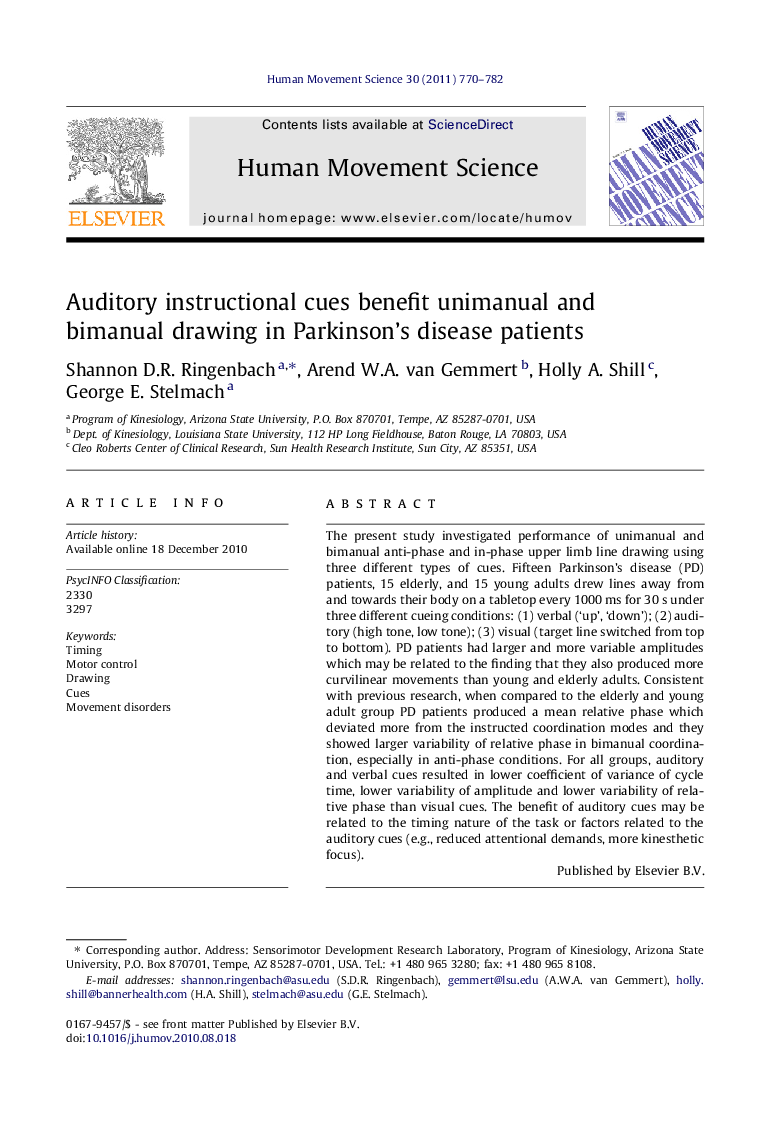| Article ID | Journal | Published Year | Pages | File Type |
|---|---|---|---|---|
| 928575 | Human Movement Science | 2011 | 13 Pages |
The present study investigated performance of unimanual and bimanual anti-phase and in-phase upper limb line drawing using three different types of cues. Fifteen Parkinson’s disease (PD) patients, 15 elderly, and 15 young adults drew lines away from and towards their body on a tabletop every 1000 ms for 30 s under three different cueing conditions: (1) verbal (‘up’, ‘down’); (2) auditory (high tone, low tone); (3) visual (target line switched from top to bottom). PD patients had larger and more variable amplitudes which may be related to the finding that they also produced more curvilinear movements than young and elderly adults. Consistent with previous research, when compared to the elderly and young adult group PD patients produced a mean relative phase which deviated more from the instructed coordination modes and they showed larger variability of relative phase in bimanual coordination, especially in anti-phase conditions. For all groups, auditory and verbal cues resulted in lower coefficient of variance of cycle time, lower variability of amplitude and lower variability of relative phase than visual cues. The benefit of auditory cues may be related to the timing nature of the task or factors related to the auditory cues (e.g., reduced attentional demands, more kinesthetic focus).
